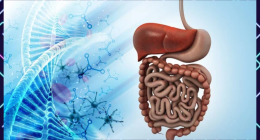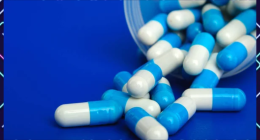Microplastics Found in All Human Placentas: Cause for Concern? Whether the recent discovery of microplastics in all human placenta samples is cause for immediate concern is a complex question with no simple answer. Here’s what we know!
New Mexico researchers detect plastic particles in every placenta sample tested, raising questions about potential health impacts.
Recent studies have revealed the widespread presence of microplastics (tiny plastic particles) in our environment, from food and water to the air we breathe. Now, a groundbreaking study by the University of New Mexico has detected microplastics in a place no one expected: human placentas.
The study, published in the journal Toxicological Sciences, analyzed 62 placenta samples and found microplastics in every single one. The amount varied, ranging from 6.5 to 790 micrograms per gram of tissue. The most prevalent polymer found was polyethylene, constituting 54% of the total plastics detected, alongside a mixture of nine other polymers. While these numbers seem small, the researchers are concerned about the long-term effects of continuous exposure to these tiny invaders.
“Dose makes the poison,” says lead researcher Dr. Matthew Campen. “If the dose keeps going up, we start to worry. If we’re seeing effects on placentas, then all mammalian life on this planet could be impacted.”
The study used a novel technique to identify and quantify the microplastics. By chemically treating the samples and then using a process called pyrolysis, the researchers were able to identify different types of plastics present. The most common plastic found was polyethylene, used in plastic bags and bottles, followed by PVC and nylon.
How do microplastics end up in the human placenta?
Microplastics can enter the human placenta through various routes. It is believed that humans ingest microplastics by breathing in aerosols and accidental consumption. Microplastics are present in food, especially in seafood, sea salt, and drinking water, and have been found in commercial honey, table sugar, and beer. Once inside living tissues, they can cause immune reactions, inflammation, and metabolic stress. Due to their small size, microplastics can be carried through cells along with nutrients, potentially invading the placental tissue. The presence of microplastics in human placentas is a matter of great concern due to the crucial role of the placenta in supporting the fetus’s development and its potential to act as an interface with the external environment.
What are the long-term effects of microplastics in human placenta?
The long-term effects of microplastics in the human placenta are not yet fully understood, but there are concerns about potential health implications for both present and future generations. The presence of microplastics in human placenta tissue, as revealed by a study conducted by the University of New Mexico Health Sciences, raises significant concerns. The study found that microplastics were present in all 62 placenta samples tested, with concentrations varying widely from 6.5 to 790 micrograms per gram of tissue.
The most prevalent polymer found was polyethylene, constituting 54% of the total plastics detected, alongside a mixture of nine other polymers.
While the health impact of microplastics in the body is not yet fully known, there is growing evidence to suggest that they may pose significant health risks, especially those small enough to cross cellular membranes.
Some potential effects on foetuses include reduced foetal growth, immune responses, and the release of toxic contaminants, which could result in harm.
Further research is needed to fully assess the long-term effects of microplastics in the human placenta and their potential impact on human health.
Study summary
- Microplastics were detected in all 62 placenta samples tested.
- The amount of microplastics varied from 6.5 to 790 micrograms per gram of tissue.
- The most common type of plastic found was polyethylene (used in plastic bags and bottles).
- The study raises concerns about the potential health impacts of microplastics, as they are small enough to enter cells.
- A link between microplastics and rising health issues like inflammatory bowel disease and declining sperm counts is suggested, but further research is needed.
- Plastic production is projected to double every 10-15 years, highlighting the need for urgent solutions to reduce microplastic exposure.
ALSO READ: Associations between food additive emulsifiers and cancer risk









